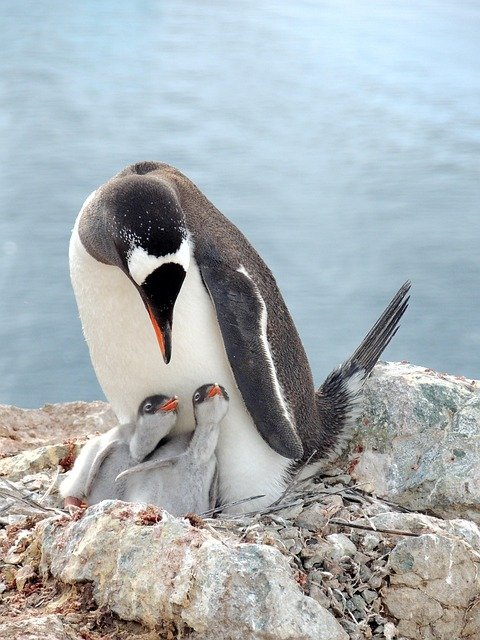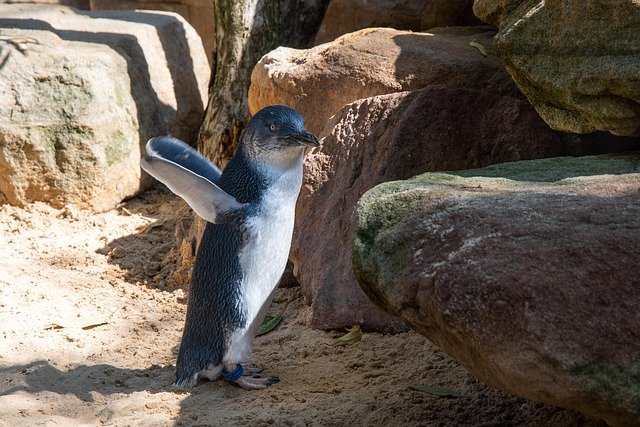**Title: "The Social Lives of Penguins: Exploring Their Unique Communication and Social Structures"** **

The Social Lives of Penguins: Exploring Their Unique Communication and Social Structures
Penguins are fascinating creatures that have captured the hearts of many with their charming waddle and striking appearance. Beyond their adorable exterior lies a complex social structure and an intricate system of communication that is essential for their survival in the harsh environments they inhabit. In this post, we will delve into the social lives of penguins, exploring their unique communication methods and social behaviors.
Social Structures of Penguins
Penguins are highly social animals that thrive in colonies. These colonies can range from a few dozen individuals to thousands, depending on the species and the breeding season. Within these colonies, penguins establish a variety of social interactions that are crucial for their survival.
1. Hierarchical Structures
Many penguin species exhibit hierarchical structures within their colonies. Dominance hierarchies can influence access to resources such as food and nesting sites. For instance, in Emperor penguins, larger and more dominant individuals may have better access to prime nesting locations. Understanding these hierarchies is essential for researchers studying penguin behavior and ecology.
2. Pair Bonding
During the breeding season, penguins form monogamous pairs that often last for several seasons. These pair bonds are vital for successful breeding, as both parents share responsibilities in incubating eggs and feeding chicks. The strength of these bonds can be observed through mutual preening and vocalizations, which reinforce their connection.
Communication Methods
Communication is key in the social lives of penguins. They rely on a variety of vocalizations and physical displays to convey messages to one another.
1. Vocalizations
Penguins are known for their diverse vocal repertoire. Each species has its own distinct calls that serve different purposes, such as attracting mates, signaling danger, or maintaining contact with chicks. For example, the Emperor penguin's call can be heard from several kilometers away, allowing mates to locate each other amidst the crowded colony.
2. Body Language
In addition to vocalizations, penguins use body language to communicate. Postures, movements, and even the positioning of their flippers can convey messages about aggression, submission, or courtship. For instance, a penguin that stands tall with flippers raised may be displaying dominance, while a penguin that crouches low may be signaling submission.
Social Learning and Cooperation
Penguins also exhibit behaviors indicative of social learning and cooperation. Young penguins learn essential survival skills by observing their parents and other adults in the colony. This learning process is crucial for their development and increases their chances of survival in the wild.
1. Huddling Behavior
In harsh weather conditions, such as extreme cold or strong winds, penguins engage in huddling behavior. By clustering together, they conserve heat and protect themselves from the elements. This cooperative behavior not only helps individual penguins survive but also strengthens social bonds within the colony.
2. Foraging Strategies
Some penguin species, like the African penguin, exhibit cooperative foraging strategies. Groups of penguins may work together to herd fish into tight schools, making it easier for them to catch prey. This social foraging behavior highlights the importance of collaboration in their survival.
Conclusion
The social lives of penguins are a testament to their adaptability and resilience in some of the most challenging environments on Earth. Through their complex communication methods and social structures, these remarkable birds demonstrate the importance of community and cooperation. As we continue to study and learn from these fascinating creatures, we gain valuable insights into the intricate web of life that exists within their colonies.
By understanding their social behaviors, we can better appreciate the role penguins play in their ecosystems and the challenges they face in a rapidly changing world.

Upvoted! Thank you for supporting witness @jswit.